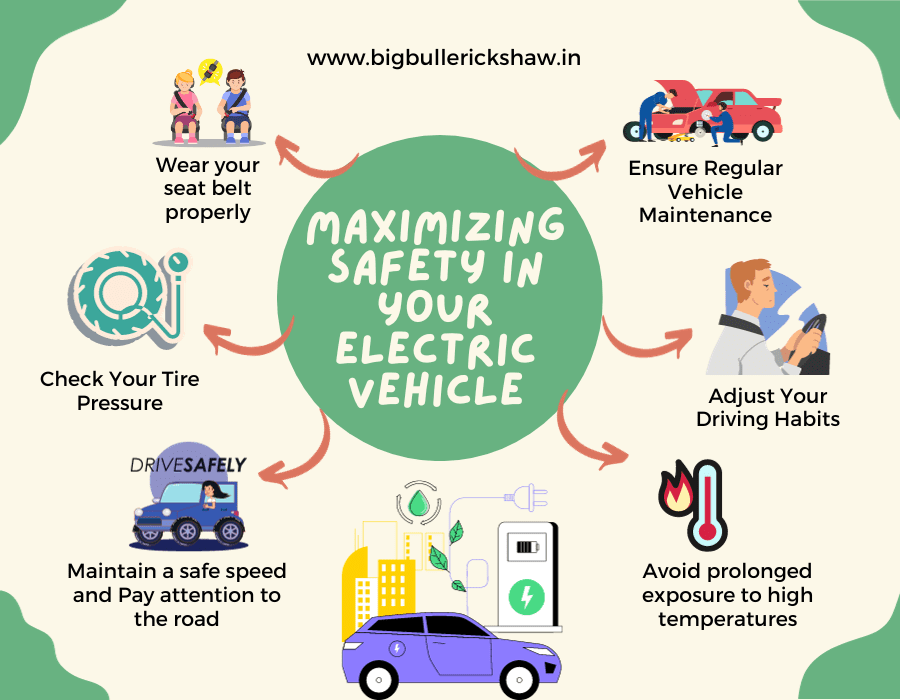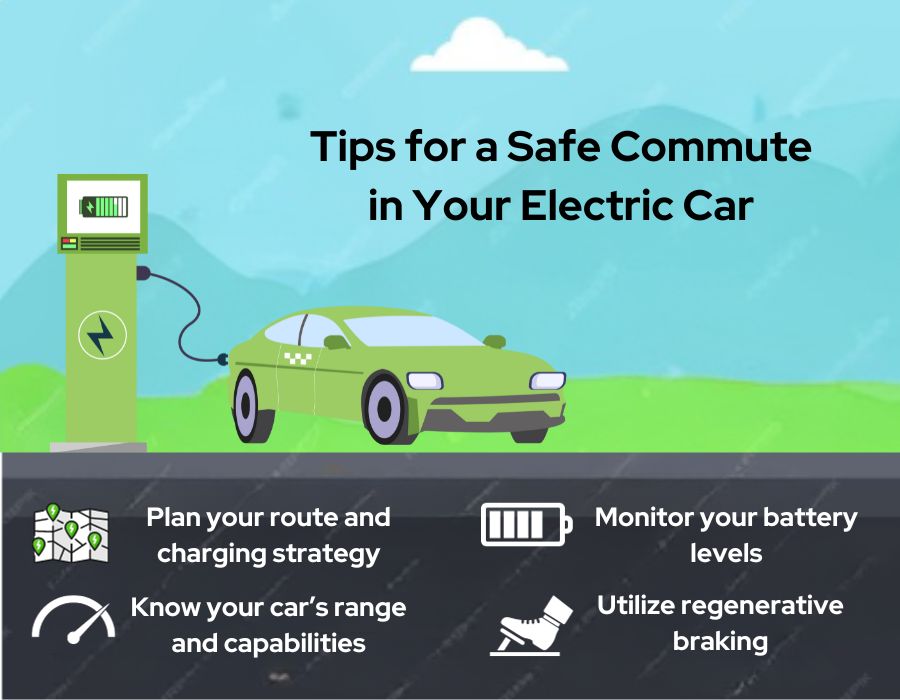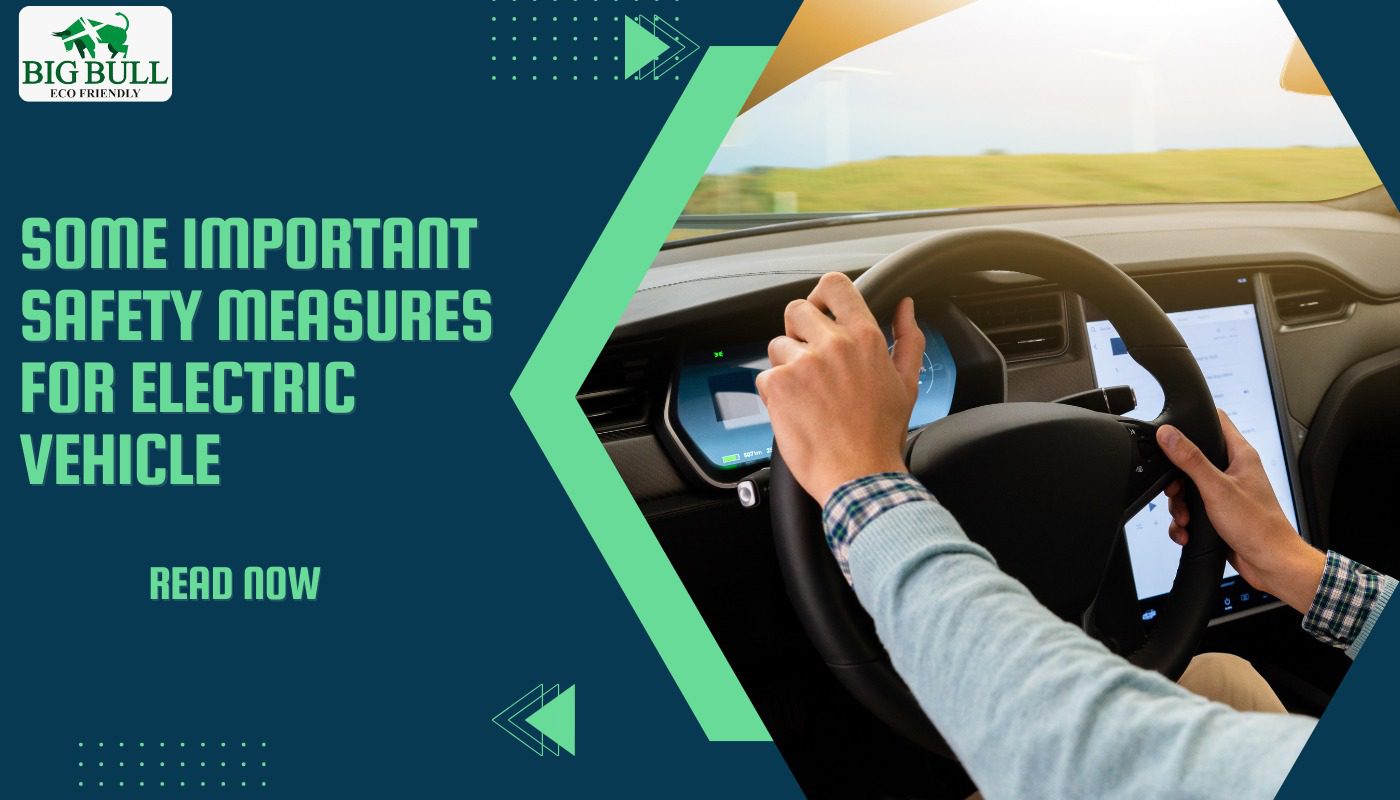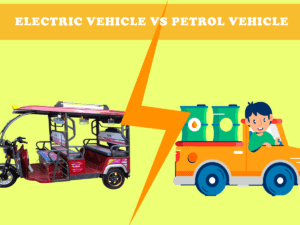In many urban and semi-urban regions, electric vehicles in India, sometimes called e-vehicles, electric rickshaws, electric tuk-tuks, or electric scooter, have been raised as a sustainable and affordable means of transportation. When compared to their conventional counterparts, these eco-friendly automobiles are not only practical but also safer. But the most important thing is to make sure that both drivers and passengers are safe. This blog will discuss safety measures for electric vehicle that should be followed to ensure that everyone traveling in an electric vehicle is safe.
Table of Contents
ToggleSeatbelts and Secure Seating of electric vehicle
Seatbelts are made to keep people safely buckled into their seats; it is one of the safety measures for electric vehicle, preventing ejection during accidents. They stop people from flying out of the car in the event of an accident or sudden halt. Serious injuries or even death may follow from being ejected from a moving electric vehicle. Due to their open design and potential lack of safety features, electric vehicle is especially in need of seatbelts.
Seatbelts reduce injury severity by spreading the power of an accident across the strongest body areas, like the chest and pelvis. By limiting the stress applied to delicate bodily regions, they lower the danger of severe injury. In principle, seatbelts protect from the deceleration forces brought on by collisions.

Driver Qualifications and Licensing is safety measures for electric vehicle
Driver Competence and Skill: As part of the licensing process, drivers must undergo training and testing to determine their proficiency in operating a safety measure for electric vehicle. Essential abilities like vehicle control, road awareness, and traffic laws are covered in this training. Driver competence ultimately improves passenger safety because it increases the likelihood that drivers will make wise decisions and react to unforeseen circumstances.
Understanding Electric Vehicle Operations: Compared to other vehicles, electric vehicles may have special features and operational requirements. Drivers who are qualified are given the necessary training to comprehend the unique needs and capabilities of electric vehicle, enabling them to drive the vehicle safely and effectively.
Speed Limits and safety measures for electric vehicle while driving
Passenger Safety: Maintaining proper speeds lowers the possibility of accidents, particularly in urban locations with heavy traffic and erratic road conditions. Injuries or ejections of passengers might result from abrupt stops or fast movements.
- Safety for pedestrians: Slower speeds in densely populated regions lower the chance of collisions with people who could erratically cross the street. Safe driving habits, like cautious merging and ceding to pedestrians, reduce accidents and safeguard those who are most vulnerable on the road. The electric vehicle is made for urban transportation and is most stable at moderate speeds. Speeding can impair vehicle stability and cause rollovers or accidents, especially on roads with sharp curves or uneven surfaces. Speed limit is one of the safety measures for electric vehicle.
- Energy Efficiency: Operating an electric vehicle within the advised speed restrictions maximizes energy efficiency. High-speed operation uses more electricity, which reduces the vehicle’s range and necessitates more frequent charging. Electric vehicle is quieter than conventional vehicles, which helps to lessen noise pollution in cities. Residents’ exposure to noise disruptions is further reduced by following speed limits and abstaining from aggressive driving.

Regular Safety Maintenance for electric vehicle
- Safety Assurance: Preventing potential safety problems from developing into accidents is made possible by routine maintenance checks. The likelihood of mechanical breakdowns and accidents is considerably decreased by routinely evaluating the vehicle’s brakes, lighting, steering, and other crucial components, improving passenger and driver safety.
- Optimal Performance: Regular upkeep makes sure that an electric vehicle performs at the highest degree possible. Vehicles that have been appropriately maintained operate efficiently, giving passengers a smoother, more comfortable ride and allowing the driver to maneuver through traffic more skilfully.
- Longevity of Components: The mechanical and electrical parts of electric vehicles require routine maintenance. Oil changes, brake inspections, and tire rotations are examples of maintenance procedures that assist in extending the life of these parts and lessen the need for repairs and replacements.
Optimizing Electric Vehicle Performance: Environmental Benefits, Regulatory Compliance, Paint Security, and Weather Considerations
- Benefits for the environment: Electric vehicle is well-known for being ecologically beneficial. They can be kept as clean and effective as possible with proper maintenance, which helps to reduce emissions, air pollution, and noise pollution.
- Regulation Compliance: According to laws in many areas, commercial vehicles like electric vehicles must undergo routine maintenance and inspections. Following these rules guarantees compliance and prevents potential legal problems.
- Paint security: when the electric vehicle is painted, one should keep in mind that it should be painted with heat resistance because if an accident occurs, the performance of the battery with high voltage can be reduced.
- Weather considerations:
- weather considerations are essential for safety measures for electric vehicle. Unfavourable weather conditions might cause problems that need careful monitoring and adaptation. Speed reduction, wider following distances, and keeping visibility with wipers and lights are crucial safety precautions in rainy circumstances. Winter tires, cautious driving, and careful braking are required on snowy and icy roads to prevent skidding. Extreme heat may call for proper cooling to ensure passenger comfort and battery management. Visibility is improved in fog by slowing down, maintaining safe following distances, and using low-beam headlights. To avoid risks in windy situations, maintain a tight grip on the steering wheel and fasten any loose objects. To ensure a safe and pleasurable electric vehicle ride, it is essential to prioritize safety and adapt driving techniques to the weather conditions.
Conclusion
Electric vehicle provides an efficient and environmentally beneficial means of transportation, but it is crucial to protect both drivers and passengers. Passengers can help make the electric vehicle experience safer by adhering to certain safety procedures and recommendations, making it a safe and environmentally friendly option for urban transportation. Together, we can make use of the advantages of electric vehicles while putting everyone’s safety first. Safety is a community endeavor.






